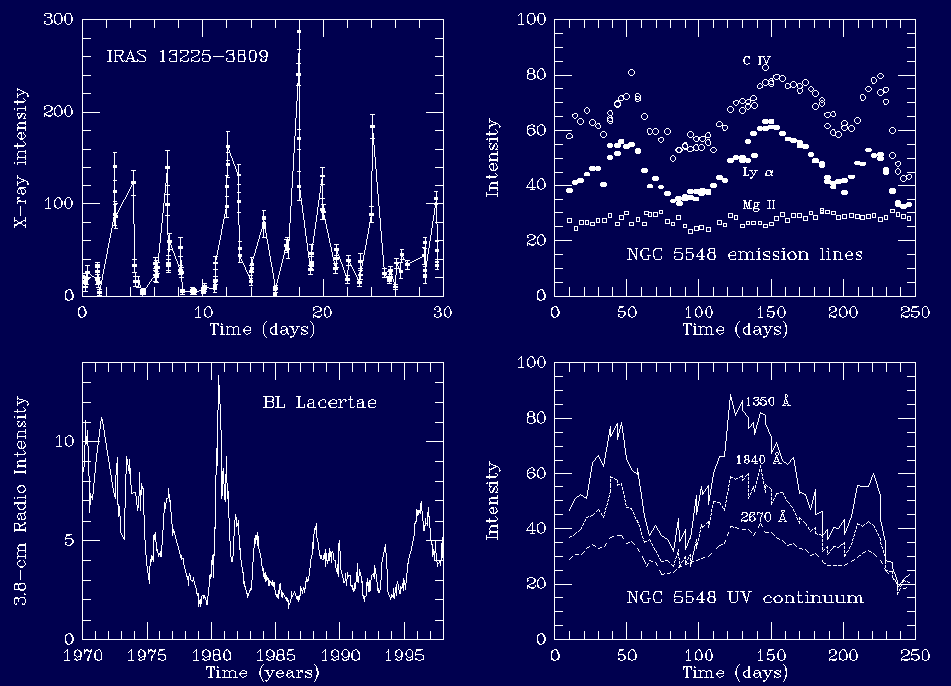
Quasars, BL Lacertae objects, and Seyfert galaxies show prominent variability at many wavelengths, which has been used to provide clues to the sizes and structure of the region producing the radiation. This graph compares three objects showing characteristic kinds of variability. The most complete variation history shown is for BL Lacertae itself from a long-running monitoring program at the University of Michigan Radio Observatory, observed at a frequency of 8 GHz (wavelength 3.8 cm). Averaging all measurements within each five-day interval gives 792 data points over a 28-year period. This shows why the radio behavior of such violently-variable objects is often spoken of as a series of flares, sometimes overlapping in time.
A recent discovery has been that the class of Seyfert nuclei known as narrow-line Seyfert 1 are continually and strongly variable in the X-ray range, as seen in the ROSAT data series of the Seyfert IRAS 13224-3809. These objects were originally defined from their optical spectra, as having the broad lines of type 1 Seyferts but with some of the narrowest widths ever seen for these lines. They may be a special subset of Seyferts, or perhaps ordinary Seyferts seen from a particular direction such as along the pole of a disk-shaped gas structure. For these data, statistical error bars are indicated on each measurement to indicate how significant these huge changes are.
Several Seyfert galaxies have been the subjects of intense spectroscopic campaigns to enable reverberation mapping of their nuclei. This approach uses the notion that any change in the ionizing continuum source will be reflected in the emission-line gas, after a delay that corresponds closely to the extra light-travel time from the nucleus to each gas parcel and then on to us compared to that directly from the nucleus. The data here are from a series of IUE observations of NGC 5548, (DATES) with the continuum measured at three ultraviolet wavelengths compared to three strong emission lines which have very different ionization levels and so might be expected to arise in quite different regions. The continuum is most variable in the deep ultraviolet, as can be seen by comparing the three continuum bands. The Lyman alpha and C IV emission lines follow the continuum changes closely, indicating that they come from areas a few light-days in extent, while Mg II hardly changes at all, coming from a region at least light-months in radius. More sophisticated modelling suggests that the shapes as well as sizes of these regions differ as well.
The BL Lacertae data were retrieved via the WWW archive of the University of Michigan's Radio Observatory, which has operated a long-running program of monitoring variable radio sources with NSF support. The ROSAT data for IRAS 13224-3809 were provided by Thomas Boller, and were described by Boller et al. in MNRAS 289, 393 (1997). The NGC 5548 continuum and emission-line light curves are from the International AGN Watch, and can be retrieved from their WWW site at Ohio State University supported by Brad Peterson.